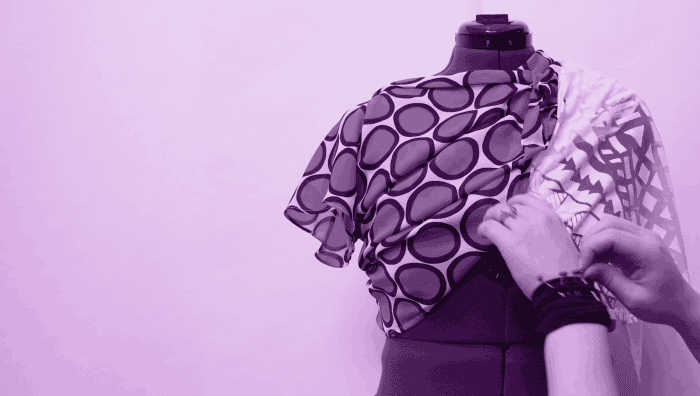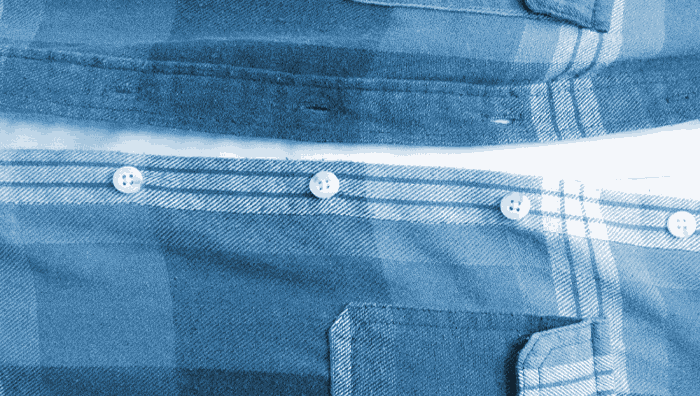Walter Isaacson: It’s spring, 1862. In Paris, author Victor Hugo has published his fifth novel, Les Miserables. Half a world away, Mexico’s defeat of the French army at Puebla has enshrined Cinco de Mayo is a day of national celebration. In America, Readers of the Atlantic monthly had discovered a new anthem, Julia Ward Howe’s “Battle Hymn of the Republic,” yet much of that republic echoed with a different sound. As both Union and Confederate troops struggled from Shiloh, Tennessee to New Bern, North Carolina, and as President Lincoln agonize logistics and strategies, one matter would not trouble the Union Army: what to wear.
The civil war because one particularly unexpected boon. In the buzzing factories of the industrial states of the north, clothing was being mass produced for the first time. The biggest challenge was making identical uniforms for hundreds of thousands of soldiers of all shapes and sizes. To simplify the process, they devised a system to categorize uniforms into four general sizes: small, medium, large and extra large, the same standard that probably applies to something you’re wearing right now. As the Union struggle to preserve the republic, it’s quartermasters, through this mass production breakthrough, had shaped the course of the modern fashion and apparel industry
For every generation since then, fashion has been used to disrupt social norms until a series of abrupt shifts in culture and technology would, in turn, disrupt the fashion industry. This is the story of how fashion became entwined with feminism, war and civil rights, and of a French cabaret singer who went on to shape a century of style. I’m Walter Isaacson, and this is Trailblazers, an original podcast from Dell Technologies.
Speaker 2: As a specialty today, we’re going to take you behind the scenes for an exciting event.
Speaker 3: An outdoor style show, and a show that’s glowing with color.
Speaker 4: This is a stunning burgundy evening dress. Notice the Palm Beach suit, the new callow in white. Well, doesn’t he look comfortable?
Speaker 5: Yep, they are lovely, aren’t they?
Walter Isaacson: In the beginning of the fashion industry as we know it, there was haute couture, high fashion. It’s trailblazer was an Englishman, Charles Frederick Worth. Barely a teenager in the 1830s, Charles fell into a series of jobs to support himself. He soon settled in the textile trade, moved to Paris and began creating opulent, fantastically expensive clothing for society’s creme de la creme. His influence is still felt in what’s now considered to be industry norms. He was the first designer to sew his name into his pieces, and the first to use models to display his clothing. He died in 1895, having created the haute couture culture that would thrive into the 21st century.
By the turn of the 20th century, the fashion industry was growing fast, with the proliferation of sewing machines, the growth of textile factories and railways to hurry the latest wares to distant cities. For ladies of means, but lacking in haute couture budget, the business of clothing and fashion operated within a man’s world. Men ran the mills, man ran the stores, man escorted women as they shopped for clothes and controlled the spending. Marlen Komar is a fashion history researcher.
Marlen: In the 1800s it was illegal for a middle class white women to walk the streets, so you always had to be accompanied by a male escort, whether that was your father, your brother, your husband.
Walter Isaacson: Shopping for clothes was strictly transactional. A lady would be escorted to a store where a clerk would help her with her order, and she would take her leave. Her clothing would then be made to her measurements. There were no displays, no items to touch or try on. The word browsing was yet to enter the retail lexicon. On the morning of March 15th, 1909, that all changed when a brazen American, Harry Gordon Selfridge opened Selfridge’s, his much ballyhooed department store on London’s Oxford Street. For the first time, clothing and accessory were on display with browsing encouraged Selfridge and a new generation of department store magnate transform clothes shopping from the transactional to the experiential. A key to Selfridge’s success was giving control of that shopping experience to women. It was the first step in a shift that would see women ultimately control more than three quarters of all consumer purchase decisions.
Marlen : He did want to create this kind of safe haven for women in his department stores, because they knew that they would spend the money, right? He was a savvy businessman. There’s this one quote that he said where he gave the women the tools to be emancipated, but they did the work, because a lot of the times the suffragists, they would actually meet in department stores to host meetings and to kind of plan their action of attack to how to become emancipated, how to get the vote. And Selfridge especially, he wanted to create this meeting point for women to gather, to discuss, trade ideas, but also at the same time spend their money.
Walter Isaacson: Such was the regard of suffragettes for Harry Selfridge that when groups of women smashed store windows throughout London in protest, the windows of Selfridge’s we’re deliberately spared. Changes to the role of women to fashion and to the fashion industry became inextricably linked. Meanwhile, in the battle for women’s rights few may have noticed the fashion revolution brewing at 31 Rue Cambon in Paris.
Gabrielle Bonheur Chanel was born in the French countryside in 1883. after the death of her mother at age 12, Chanel and her sister was sent to an orphanage where they learned how to sew. When her brief career as a cabaret singer sputtered, 20 year old Coco, as she was now known, became mistress to a textile heir and began designing hats and clothes often inspired from the wardrobe of her lovers.
Marlen : She came up with these loose fitting pieces because she would have many lovers, and after spending the night with them, she would go to their closet and put on their suits and see how these baggy suits would drape her, and she really enjoyed how it draped her body.
Walter Isaacson: The simple, loose fitting elegance of Chanel’s fashions flew in the face of pre World War I Edwardian tradition with it stays and corsets and heavily layered dresses. Her styles were a perfect fit in the age of suffragettes and the growing women’s rights movement.
Marlen : The interesting thing with a Chanel was that she helped to emancipate women in terms of fashion. If you wanted to get into a carriage, it was very difficult to kind of clamber in by yourself. You needed the assistance of a man, or to cross a busy street, to cross in an efficient, quick manner so a carriage doesn’t run you over, you needed the help of a man’s arm to cross it you know? So by Chanel taking it upon herself to take away all that extra under garments and to give them these loose silhouettes, it really freed women to move on their own.
Walter Isaacson: Where men had used fashion to help define women, Coco Chanel help use fashion to let women define themselves. Based in Rue Cambon, still the brand’s flagship store, Chanel popularized women’s costume jewelry and perhaps it was scandalous item of all: pants. In October 1926, Vogue Magazine by then the go-to fashion publication introduced readers to one of Chanel’s greatest legacies: the little black dress. Marlen Komar:
Marlen: It was quite like a disruptor in the fashion movement in the fact of when you think of 1920s fashion, it’s very fancy, it’s very opulent. You have the beading, very colorful colors, and black back then, it was mostly assigned to widows because World War I just happened. There was a lot of widows in France and they wore black clothing to show that they were in mourning, but Chanel took that color and she elevated it.
Walter Isaacson: In 2011, four decades after her death, Chanel’s legacy would be challenged. Declassified documents suggested that Coco Chanel served quietly as a Nazi operative in France during the war. The complex story of Gabrielle Chanel and her empire suddenly became more complex. Elizabeth Paton is European style correspondent for the New York Times.
Elizabeth: The fashion industry has always been full of complicated characters, and I think particularly now more than ever before, society is struggling on how to separate art and artist’s work and whether you should do that if they as allegations come to light. I think Coco Chanel is an interesting example of a truly complicated woman, and there is no doubt that the allegations made about her connections are true, but she was also a true trailblazer. She created the foundations of probably the most valuable fashion house in the world at a time when very few women were doing anything similar.
Walter Isaacson: As Coco Chanel did business in occupied France, the Second World War would disrupt fashion, just as wars had for generations. Soldiers returning home were accustomed to the uniform styles they’d worn in service. Tailors, many of whom learn their trade making uniforms, were happy to oblige. In fact, the single and double breasted suits men wear today are direct ancestors of the uniforms created in Napoleonic times.
By the 1950s, a rebellious postwar generation lashed out in its music, in its attitude, and in the clothes it wore. Eschewing the traditional styles of their fathers, 1950s teenagers turned to casual, albeit military inspired clothing. T-shirts, leather bomber jacket, and the new badge of rebellion: denim jeans. Folklore credits the rise of genes in the 1950s and sixties to the big screen inspiration of James Dean in Rebel without a Cause and Marlon Brando in The Wild One. As Marlen Komar explains, there’s a lesser known civil rights dimension to the story.
Marlen : The point in history about actually made denim, made jeans part of mainstream media was actually the civil rights activists. Civil rights activists would wear denim while marching in the streets for civil rights for a very specific reason. Before the emancipation proclamation, plantation owners would wear linen and silks, and then their slaves would wear denim because it was very sturdy. It was proper material to work the plantations. When civil rights activists wore overalls, wore denim jeans during their marches, it made the white neighbors, the white spectators, very uncomfortable because they knew exactly what they were alluding to without ever having to say it.
Walter Isaacson: As a fresh generation was changing demands in fashion, a new breed of entrepreneurs change the way fashion companies did business. In 1963 in the village of Galicia, Spain, businessman Amancio Ortega founded a company that would become today’s Zara Clothing, a pioneer in what’s known as fast fashion. The strategy is to respond immediately to consumer trends and frequently renew styles to create fresh demand, which in turn will store more consumption. Zara did so by integrating all phases of design and production in house. The journey from concept to market, which had traditionally taken months, was streamlined to as few as five weeks. Today, fast fashion brands, turn out what they call micro collections at a rate of one a week. It was great for business, but had social and environmental costs that would come back to haunt the industry. Competing brands would follow Ortega’s fast fashion example, effectively dialing up consumer appetite for the newest and latest, little imagining that their days of controlling consumer demand were numbered.
However for much disruption in the fashion industry had seen through the 20th century, nothing prepared it for the digital age. Elizabeth Paton:
Elizabeth: Well, I just think it’s that the landscape underpinning the fashion industry has been totally upended in the last three decades by the digital revolution, and that can be seen in the way that brands do business, in the way they make their product, in the way they sell their product, and how they find consumers.
Walter Isaacson: If a fashion reporter took a nap just before the digital age and woke up today, the first jarring realization would be that the fashion industry has changed channels. Pre digital fashion was introduced to select groups of guests on runways, then reported in magazines and newspapers. Today’s runway shows stream live on social media, especially Instagram, giving more access to the consumer. Elizabeth Paton:
Elizabeth: Instagram is the first port of call for most fashion fans to see the latest designs from fashion weeks or to learn more about the designs and the and the brands that they love, but actually Facebook has decided to build in integrated shopping platforms into Instagram, allowing people to buy direct. What you see as a scroll of different brands and different things that you can now buy, so no longer can you just see these fashions, you can actually buy them and have them as well.
Walter Isaacson: Haute couture runway events and fashion magazines, the gatekeepers of trends since the days of Charles Frederick Worth, began losing ground to online channels and to a new generation of online influencers.
Elizabeth: There’s been a very clear shift in the power structure between fashion brands and consumers in the last two decades. Consumers now hold a lot more power than they did before, largely because of the internet. They can see what is being sold and where, they can demand product that wasn’t previously available, and this demand for immediate gratification, which is fueled by social media and the internet has meant that brands are under more pressure than ever before to deliver product in real time rather than under traditional cycles.
Walter Isaacson: Swirling around this digital disruption is a shocking decline in retail fashion sales, prompting a reevaluation of bricks and mortar stores. Elizabeth Paton:
Elizabeth: I think what’s been particularly interesting as sort of retailers rethink how they sell product is to see that they recognize that they need to use data in the same way online players do, to really look at consumer preferences and how people want to shop, what interests them. They can’t just be a warehouse of product anymore. They really have to become sort of an experience led destination, and that’s been particularly prevalent in the fashion space.
Walter Isaacson: Entrepreneur Rakesh Tondon agrees that clothing stores are ripe for reinvention.
Rakesh: People are going to go into stores, people may get to touch and feel certain types of products, but ultimately people will make certain decisions live in stores, and some will make decisions online. They’re going to make a decision to purchase items in that store, order it, and by the time they get home, the items will likely get delivered through some micro distribution centers for those products.
Walter Isaacson: Tondon isn’t just predicting the transformation of clothing stores. In a nondescript modern California warehouse, his company, Le Tote, is helping to bring it about. Le Tote, nicknamed the Netflix of fashion, is a subscription service, part of a rapidly growing category that includes Rent the Runway, Gwynnie Bee and Union Station. Subscription companies are filling niches from men’s clothing to athletic styles to maternity wear. Forbes Magazine reports that the global online clothing rental market was valued at $1.5 billion in 2017 and will increase by 9.4% by 2026. for a flat monthly fee, a Le Tote customer chooses from a selection of the latest clothes and accessories, which are properly delivered to your door. You wear them as long as you like, purchase any that you want to keep, and then return the rest to be cleaned and distributed to other customers. But Le Tote doesn’t think of itself as a clothing business so much as a data and logistics company. At its heart is a proprietary algorithm nicknamed Chloe.
Rakesh: So we developed Chloe and what Chloe is, she looks at all of the data that you provided on yourself. She looks at all of the feedback that you provided on the products that you’ve received, and then she looks at you and where you are, the weather patterns in your area. Then she makes recommendations to you based on things you like, things that you received, things that you haven’t liked that you’ve received, and how you like to wear things. So she’s also the fit technology, which I think is really, really unique to our company. Our fit technology not only takes into account the quantitative facts about you in terms of your mathematical measurement, but also looks at the qualitative side of things, which is how do you like to wear things? Do you like things a little more snug, do you like things a little more fitted, or do you like to wear things a little bit loose? So she tries to understand what you like to wear and how you like to wear, and then looks at the weather patterns and figures out the right products to send to you.
Walter Isaacson: The wealth of data collected serves both Le Tote customers and its brand name suppliers, although the latter weren’t very impressed at first.
Rakesh: Most of the brands actually really laughed at us and said, “Well, we collect a lot of data and we don’t really need any data from you.” I would say the first couple of years we didn’t really do much with this data except use it for our private labels, and then as we started building deeper and deeper relationships with our brand partners and as the company started to grow in prominent, brands started to recognize that we have data points that they could actually benefit from.
Walter Isaacson: By luring more brands with these rich data insights, online clothing, rental subscriptions, help democratize fashion, providing designer brand access to customers who might not otherwise be able to afford the hefty price tag, and by having the same garment worn more often by different subscribers, it helps reduce their carbon footprint. That’s become especially important to environment conscious consumers, many of whom are aware that the apparel industry is second only to oil as a world’s largest industrial polluter.
Some fashion businesses with powerful online communities have begun flexing their muscles, citing the industry’s poor record of labor and environmental harm. For one industry outlier, this growing army of activist consumers were a perfect fit. On Black Friday 2011 and ad appeared in the New York Times featuring a Patagonia jacket under the bold headline, “Don’t buy this jacket.”
Rick: Because we wanted to shock people into reading the copy, because there we told them about the real problems of consumption.
Walter Isaacson: Rick Ridgeway is a climber, author, and filmmaker, now Patagonia’s vice president of public engagement.
Rick: We explained how we had done everything we could to make that jacket with no unnecessary harm, to reduce its impact as much as possible. But despite that effort, that jacket had required 135 liters of water to make it. That jacket had released 20 pounds of greenhouse gases into the atmosphere. That jacket had left behind two thirds of its own weight in waste, and that was after our very best effort to reduce the footprint of that jacket. The best thing our customers could do if they wanted to partner with us to reduce their personal footprints was to not buy the jacket.
Walter Isaacson: Founded in the 1970s, Patagonia remains an extension of the deep set values of founder Yvon Chouinard, a climber, environmentalist, and businessman. Patagonia is as much a movement as it is a clothing company. Rick Ridgeway professes that in apparel, as in any industry, environmental stewardship is good business.
Rick: You know if they manage the environmental impact in their supply chains, they can actually save money. That’s sort of the low hanging fruit, but they also get brand rewards and reputational rewards and they manage risks. When you’re not managing the impact of your supply chain, you’re taking an enormous risk as a business, and then they are also discovering that they’re getting increased recruitment in their HR divisions, that more and more young, if they make sustainability commitments, guess what? More young people want to work for them.
Walter Isaacson: Millennials have embraced an amplified the brand. Last year, its call for 16 summer interns yielded 9,000 applications. Patagonia embodies the attitude that surrounds the online shift in the clothing business. Consumers originally attracted to value are now gravitating to values. Elizabeth Paton:
Elizabeth: What’s really important to recognize is that social media has given people a voice, and just as we’ve seen in political spheres, lots of fashion fans often rally together to pressure brands to change things about the way they do business. For example, their supply chains. They can also use to make sure that brands align themselves with the values that are interesting to them, so made in Italy or made in France, things that had always given a luxury product enormous value might change, and consumers might say, “Well, I want to know that this brand is aligned with the values that I have in my mind is the most important.”
Walter Isaacson: For an industry predicated on continent change, fashion has seen more than its share of disruption. Clothing has been used alternately as a tool of oppression and of liberation. It’s been stretched and reshaped by war, re-imagined to symbolize values of gender equality and civil rights, and virtually wiped clean and reinvented for the digital age. Now as control over fashion and the fashion industry continues to shift to online consumers, clothing will remain one of the great change agents of the 21st century. I’m Walter Isaacson, and this is Trailblazers, an original podcast from Dell Technologies. To find out more about any of our guests on the show, you can head to our website at delltechnologies.com/trailblazers. Thanks for listening.
 Subversion by design.
Subversion by design. Why buy when you can subscribe?
Why buy when you can subscribe? Values come into vogue.
Values come into vogue. Elizabeth Paton
is a reporter for The New York Times, covering the fashion and luxury sectors. Her areas of industry focus include business, tech and sustainability as well as Fashion Week coverage.
Elizabeth Paton
is a reporter for The New York Times, covering the fashion and luxury sectors. Her areas of industry focus include business, tech and sustainability as well as Fashion Week coverage.
 Rick Ridgeway
is the Vice President of Public Engagement at Patagonia and one of the key forces behind Patagonia’s environmental campaigns and activism.
Rick Ridgeway
is the Vice President of Public Engagement at Patagonia and one of the key forces behind Patagonia’s environmental campaigns and activism.
 Rakesh Tondon
is the CEO and co-founder of Le Tote, a fashion subscription service that lets you rent clothing and accessories for a flat monthly membership fee.
Rakesh Tondon
is the CEO and co-founder of Le Tote, a fashion subscription service that lets you rent clothing and accessories for a flat monthly membership fee.
 Marlen Komar
is a fashion history journalist, whose research specializes in how fashion intersects with feminism and civil rights.
Marlen Komar
is a fashion history journalist, whose research specializes in how fashion intersects with feminism and civil rights.